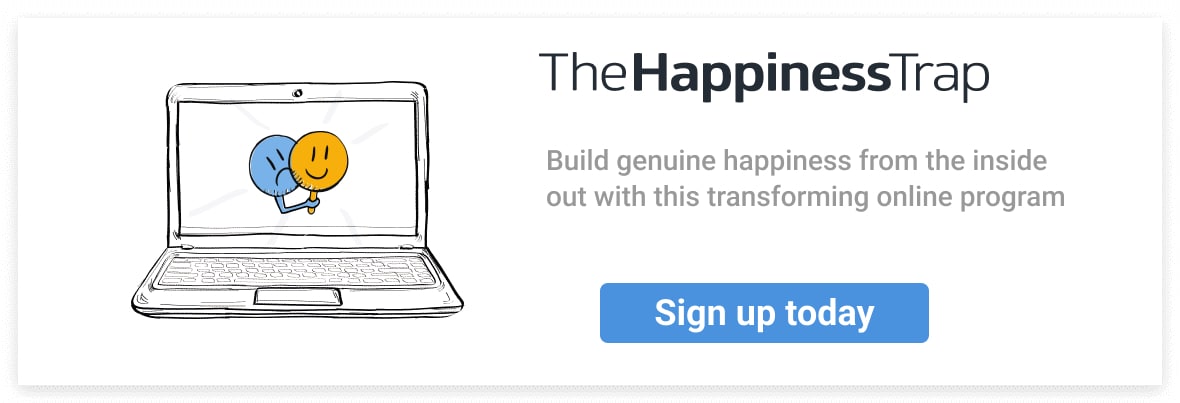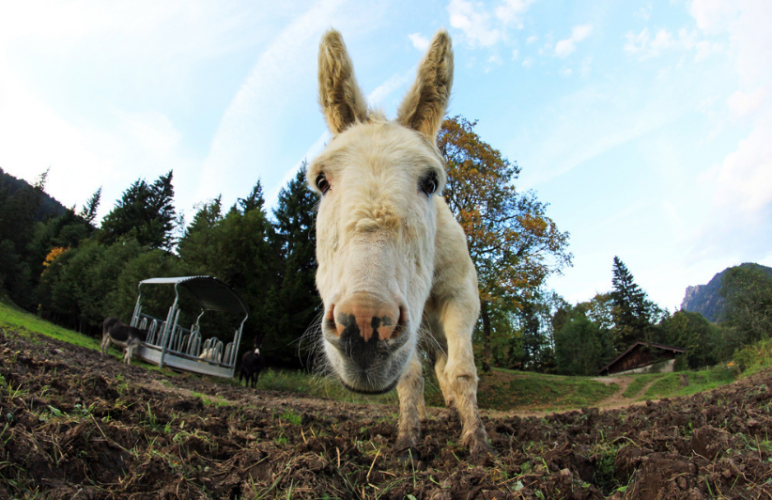If there’s one thing that sucks the joy out of life, it’s going through your day trying to resolve some difficult dilemma. We’ve all, at times, had to grapple with really hard decisions and tough choices.
‘Do I stay in this relationship – or leave?’,
‘Do I quit this job – or do I stay?’,
‘Do I enrol in that course – or the other one?’,
‘Do I have the operation – or not?’,
‘Do we try to have children – or not?’, ‘
Do I buy this one – or the other one?’, ‘
Do I want to live here – or there?’
When we’re dealing with these dilemmas, our mind easily goes into overdrive, desperately trying to figure out what to do; to ‘make the right decision’.
The problem is, it can take days, weeks, months – or even years in some cases, such as unhappy marriages or unfulfilling jobs – before we finally choose one option over the other.
And, in the meantime, we can easily spend our days wandering around in a thick psychological smog – endlessly pondering: ‘Do I or don’t I?’ – and, in the process, we make ourselves anxious or stressed, and we miss out on life, here and now.
So, how can ACT help us?
Step 1: Acceptance
When my clients present their dilemmas, hard decisions or tough choices I start off by telling them,
‘You probably will not make your final decision during our session today. It could happen – but it’s extremely unlikely.’
And if you are facing a major dilemma or decision in your life today, this is almost certainly true for you; you are not likely to resolve it in the next 24 hours. Can you make room for this reality? Struggling with it will only make it worse.
Step 2: Common Sense Steps: Costs & Benefits & More Information
Sometimes a dilemma can be resolved by the age-old common-sense method of a ‘cost-benefit analysis’. In other words, write down a list of all the benefits and all the costs for each option.
If you’ve already done this and it hasn’t helped, fair enough – at least you tried. But if you haven’t done this – or if you’ve done it half-heartedly – or you’ve done it in your head but not on paper – then you should definitely give it a go.
When you write it all down in black and white, that is a very different experience than thinking it through inside you head or talking it through with a friend – and it may help you finalise your decision.
Keep in mind that sometimes the issue can be resolved by finding out more information from a reliable source (a book, a person, a website, an organization, etc.) So make sure you have gathered enough information to make an informed decision.
If you are lucky, this new information will make the costs and benefits of each option clearer, and help you decide what to do.
However, the inconvenient truth is this: the greater the dilemma, the tougher the decision, the less likely these ‘common sense’ methods are to be helpful. Why? Because if one option was obviously far better than the other, then you wouldn’t have a dilemma in the first place!
Step 3: No Perfect Solution
Next, recognise there is no perfect solution, so whichever choice you make, you are likely to feel anxious about it – and your mind is likely to tell you,
‘That’s the wrong decision’, then point out all the reasons why you shouldn’t do it.
If you’re waiting until the day there’s no feelings of anxiety, and no thoughts about making the wrong decision, you’ll probably be waiting forever.
Step 4: There’s No Way Not To Choose
Recognise that whatever your dilemma is, you’re already making a choice. Each day you don’t quit your job, you are choosing to stay (until the day you hand in your resignation, you are staying in that job.)
Each day that you don’t leave your marriage, you are choosing to stay (until the day you pack your bags and move out of the house, you are staying in that marriage.)
Each day that you don’t sign the consent form for the operation, you are choosing not to have surgery, and so on.
Step 5: Acknowledge Today’s Choice
Following on from the above, kick off each day by acknowledging the choice you are making for this day.
For example, say to yourself,
‘Okay, for the next 24 hours, I choose to stay in the marriage’ or ‘For the next 24 hours, I choose to keep using contraceptives.’
If 24 hours seems too long, then make a choice for the next 12 hours, or 6 hours, or even for the next sixty minutes.
At the end of that time period, reassess and make another choice – for the next 24 or 12 or 6 hours (or even sixty minutes).
Step 6: Take A Stand
Given your choice in step 5 above, what do you want to stand for in the next 24, 12 or 6 hours (or even sixty minutes)?
What values do you want to live by, in this area of life? If you’re staying in the marriage for another day or another hour, what sort of partner do you want to be for that one day or hour?
If you’re staying in your job for another day or another hour, what sort of employee do you want to be for that one day or hour?
Step 7: Make Time To Reflect
Put aside time on a regular basis to mindfully reflect on the situation. The best way to do this is as in step 2: using a diary or a computer, write down the costs and benefits of each option, and see if anything has changed since last time you did this.
You could also try to imagine what life might be like – both the positives and the negatives –
a) if you went down one path, and
b) if you went down the other path.
For most people, ten to fifteen minutes 3 or 4 times a week is more than enough reflection time – but you can put aside as little or as much as you like.
The key thing is, make it focused, in other words, don’t try to do it at the same time as watching TV or doing housework or driving home or going to the gym or cooking dinner. Just sit quietly with your pen and paper or a computer, and do nothing else but reflect, as above, for the allotted time.
Step 8: Name The Story
Throughout the day, your mind will try to pull you back into the dilemma, over and over again. But if this was truly helpful, you’d already have resolved your dilemma, wouldn’t you?
So practice ‘naming the story’. For example, try saying to yourself, ‘Aha! Here it is again. The “stay or leave” story.
Thanks mind. I know you’re trying to help, and it’s okay – I’ve got this covered.’
Then focus your attention on doing some meaningful, values-guided activity. You will probably find it helpful to remind yourself, ‘I’ll think about this later, in my scheduled reflection time’.
Step 9: Open Up & Make Room
Feelings of anxiety will almost certainly arise – again and again and again – whichever option you choose. So practice opening up & making room for those feelings.
Acknowledge to yourself, ‘Here’s anxiety.’ Remind yourself, ‘This is normal.
It’s what everybody feels in a challenging situation with an uncertain outcome.’
Step 10: Self-compassion
Last, but not least, be compassionate to yourself. Treat yourself gently. Talk to yourself kindly. Unhook yourself from all that unhelpful, self-judgmental mind-chatter, using whatever defusion techniques you find best – e.g. thanking your mind, naming the story etc.
Remind yourself that you’re a fallible human being, not some high-tech computer that can coldly analyse the probabilities and spit out an answer.
Remind yourself that this is a very difficult decision – if it were easy, you wouldn’t have a dilemma in the first place! Acknowledge that you’re in pain, you’re hurting.
And do plenty of kind, caring, nurturing, considerate things for yourself; things that soothe, or nurture, or support you in this time of hardship.
This could include anything from spending quality time with close friends, taking care of your body, treating yourself to a favourite leisure activity, making time for yourself to pursue a sport or creative outlet, or even cooking a healthy dinner. It’s often helpful to practice some form of self-compassion practice.
Recycle through these steps every day, or several times a day. And one of three things will happen:
1) Over time, one option becomes obviously more attractive than the other.
2) Over time, one option disappears, it’s no longer available.
3) Over time, your dilemma remains unsolved.
If either 1 or 2 happens, the decision is made, there is no dilemma any more.
If 3 happens, then at least you get to go through each day mindfully living by your values, instead of being lost in a smog of anxious indecision.
Plus, you’ll get plenty of practice at developing self-compassion.




